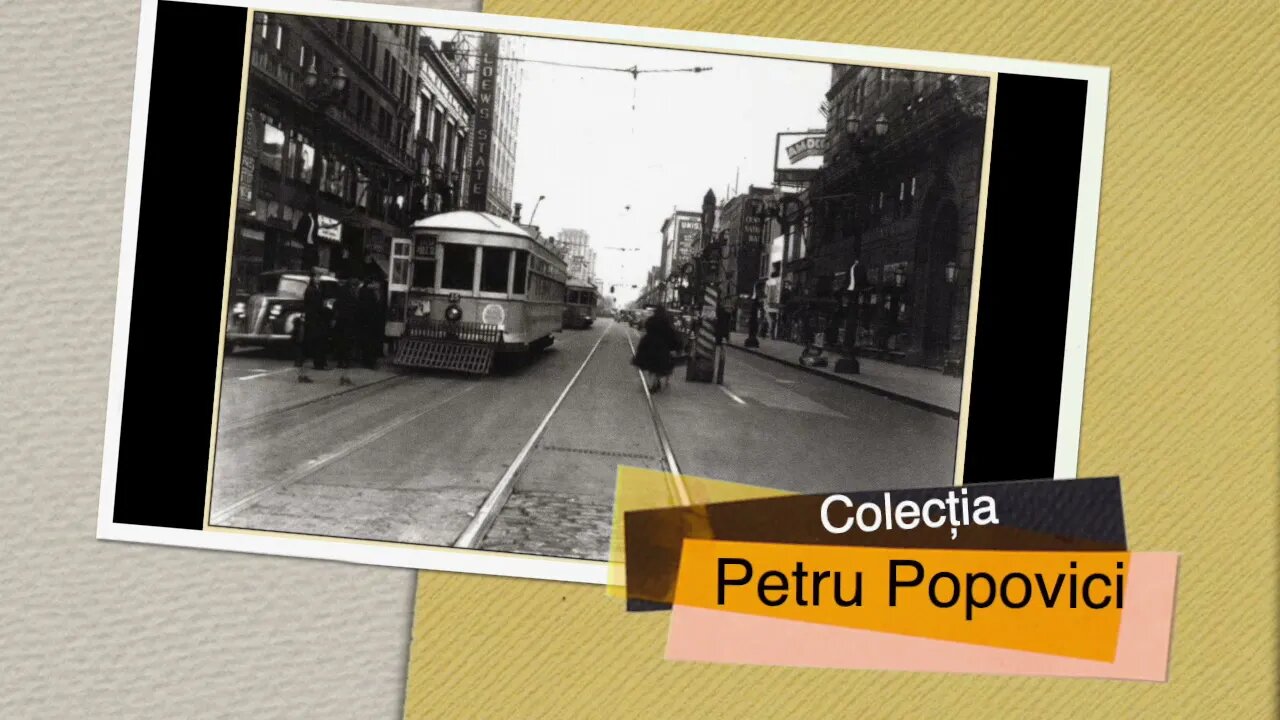Premium Only Content

Petru Popovici (4) - Dănilă Pascu
ROMANIANS. Among the new Southern and East European immigrants coming to Cleveland in the late 1800s were an increasing number of ethnic Romanians, most from the province of Transylvania, at that time part of Austria-Hungary. Other Cleveland Romanians came from the province of Bucovina on the Polish and Russian borders, also part of Austria-Hungary before WORLD WAR I. There were also a number of JEWS from the Old Kingdom of Romania.
The first Romanians in any significant numbers came to Cleveland as solitary immigrants, usually at the urging of Hungarian, Saxon, Swabian, and Jewish acquaintances from back home, who had emigrated earlier. The flow of Romanian immigrants grew steadily and continued unabated until the outbreak of World War I. By that time, there were about 12,000 ethnic Romanians in Cleveland, overwhelmingly of peasant stock who found immigration an alternative to the restrictive social, political, and economic possibilities in their homeland. Romanians settled near their places of employment, so they could walk to and from work. The largest concentration was on the west side, between W. 45th and W. 65th streets, immediately north and south of Detroit Ave., where they gradually replaced the Irish and Germans. Most worked in nearby commercial and industrial businesses, such as WESTINGHOUSE, GENERAL ELECTRIC, AMERICAN SHIP BUILDING, Hill Clutch, Walker Mfg., the ore docks, stockyards, meat-packing houses, and knitting mills. A sizable group also located in the E. 65th-St. Clair area prior to and after World War I.
...
Since most intended to return home, they made no serious effort to learn English. Those who had steady jobs and foresaw their future in this country started bringing over their families. Others went back to marry and returned with their brides to Cleveland. Before World War I, permanent settlement in Cleveland appeared the choice of only a minority of the immigrants.
After the war, when the provinces of Transylvania and Bucovina became part of Greater Romania, nearly half of the immigrant population returned to their native land. In the 1920s, only about 6,000 Romanians were left in Cleveland. After the Quota Act of 1921 and subsequent restrictive immigration legislation, few Romanians were able to get visas for this country. At the same time, some Cleveland Romanians moved to other American cities during the postwar boom. Those who remained organized parishes and other Romanian organizations on a more permanent basis. By 1940 there were only 4,000 Clevelanders who identified themselves as Romanians and participated, even sporadically, in Romanian-organized activities. Following World War II, beginning ca. 1948, about 2,000 Romanians arrived in Cleveland, mostly political refugees, displaced persons, and expatriates.
Unlike their predecessors, many were intellectuals, professionals, and skilled tradespeople who had fled Romania primarily because of their disagreement with the Communist regime installed there after World War II. They came not only from the province of Transylvania, but from all parts of Romania and elsewhere. Only a few old-time Romanians, mostly elderly people, remained in the original neighborhood by the 1980s.
In 1902, 42 Romanian Clevelanders founded the Carpatina Society. Similar fraternal and cultural societies were soon organized in other sections of Cleveland having a Romanian population. With the breakup of some of the neighborhoods, the societies joined the larger and stronger Carpatina Society. The society built a hall, offices, and facilities in 1917 at 1303 W. 58th St., which became the center of many Romanian activities. The society sponsored a youth organization, sports teams, ladies' auxiliaries, and other groups. With the change of the neighborhood, the hall was sold in 1973; 24 acres were purchased in WESTLAKE with the view of constructing new facilities. In the meantime, meetings and activities continued to be held in existing Romanian church halls.
... Six Romanian Baptists in 1911 established a parish, and in 1922 built a church at 1416 W. 57th St. Their numbers increased considerably after World War II with an influx of many coreligionists from Romania.
Cleveland is the national headquarters of the majority of Romanian mutual-benefit societies in America and Canada. The 2 existing national organizations merged into the Union & League of Romanian Societies in 1928 and in 1930 built a headquarters at 5703 Detroit Ave. A number of Romanian newspapers with national circulations were published in Cleveland, including Romanul, Solia, Unirea, Foia Poporului, and America, the official organ of the Union and League, which has appeared uninterruptedly since 1906.
Fr. Vasile Hategan
https://case.edu/ech/articles/r/romanians
-
 LIVE
LIVE
The Mike Schwartz Show
7 hours agoTHE MIKE SCHWARTZ SHOW Evening Edition 06-20-2025
91 watching -
 57:41
57:41
Sarah Westall
5 hours agoGlobal Elite Planning for War, Chaos and the Monetary Reset has Been Ongoing w/ Andy Shectman
14.7K5 -
 LIVE
LIVE
GritsGG
6 hours agoWSOW Qualifiers! 👑 2587+ Ws
164 watching -
 31:28
31:28
The Brett Cooper Show
4 days ago $6.71 earnedThe Feminists Have Turned Against Sabrina Carpenter and Sydney Sweeney | Episode 40
44.7K31 -
 9:02
9:02
MattMorseTV
5 hours ago $1.95 earnedTrump's DHS just CRACKED DOWN.
19.7K32 -
 4:21:18
4:21:18
StoneMountain64
5 hours agoDON'T LET ME FALL FROM THE PEAK
49.6K -
 LIVE
LIVE
FusedAegisTV
2 hours agoGears 1 Reloaded Beta Wkn 2 w/R4ger, FoeDubb, Midnight - Variety Stream!
80 watching -
 LIVE
LIVE
GrimmHollywood
7 hours ago🔴LIVE • GRIMM HOLLYWOOD • GRIMM STRANDING DAY 3 • STREAM DOESN'T END TIL I BEAT DEATH STRANDING
69 watching -
 2:04:52
2:04:52
Pop Culture Crisis
4 hours agoJojo Siwa SCARED STRAIGHT? Bad News For 'SUPERMAN', Sami & Lola Sheen Feud Over OF | Ep. 861
35.4K6 -
 1:20:18
1:20:18
vivafrei
4 hours agoSincere Disagreement or Inorganic Division? OUTRAGEOUS Grace Schara Verdict! AND MORE!
173K36